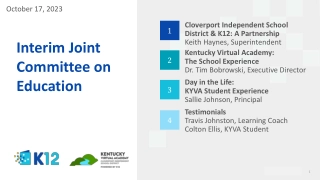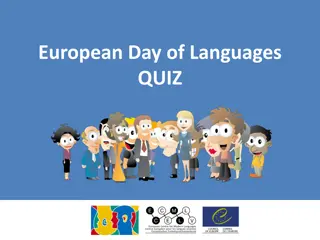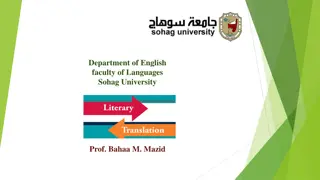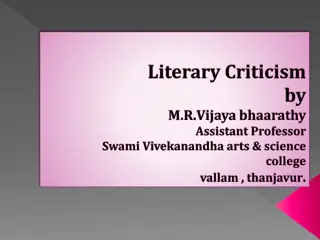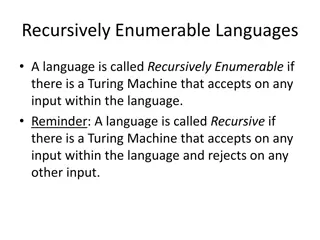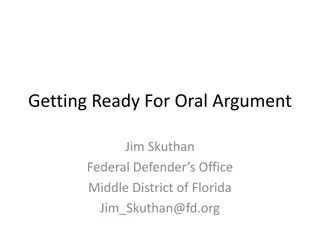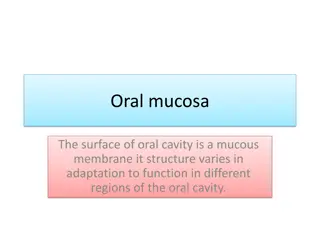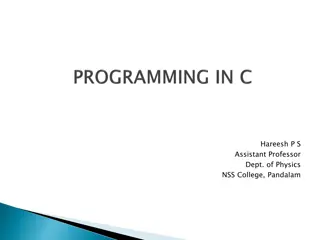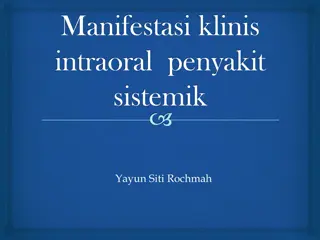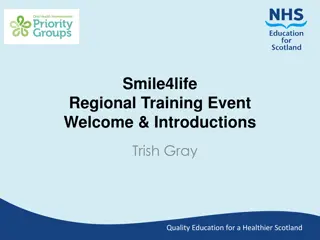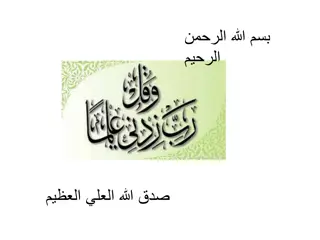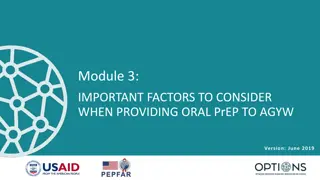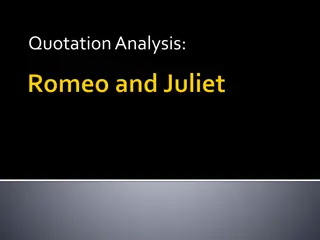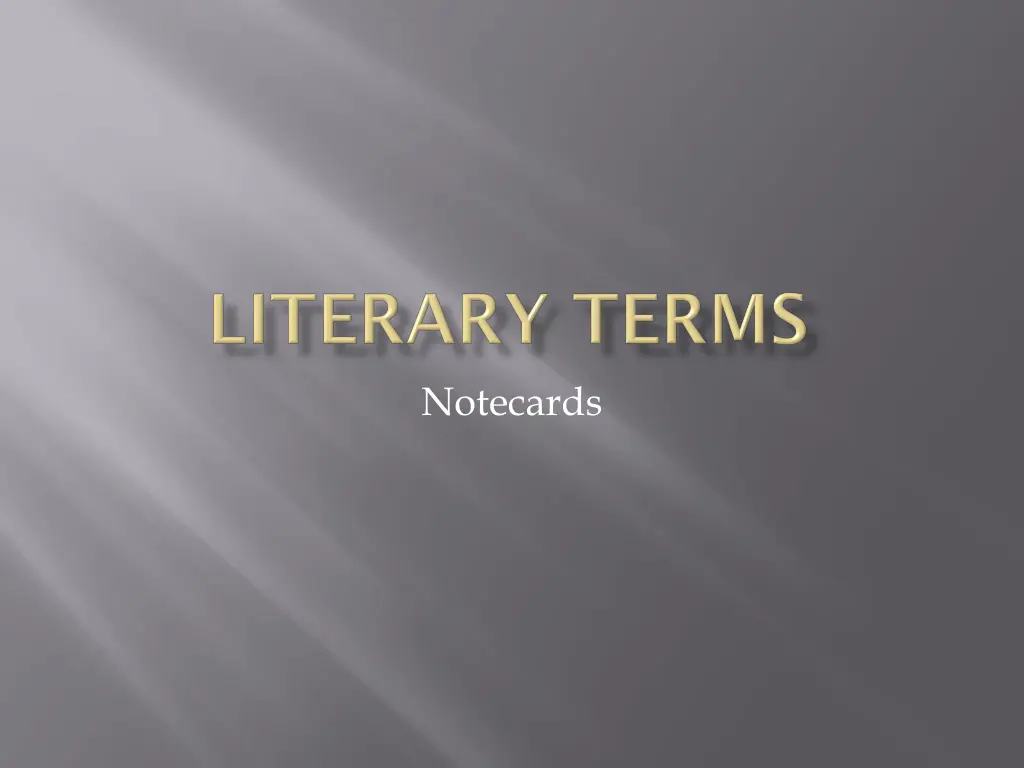
Literary Devices and Writing Styles Explained with Examples
Explore various literary devices and writing styles such as anaphora, antecedent, metaphor, allegory, and more in this informative content. Enhance your understanding of complex writing styles and emotional appeals, along with examples and explanations for each concept discussed.
Download Presentation

Please find below an Image/Link to download the presentation.
The content on the website is provided AS IS for your information and personal use only. It may not be sold, licensed, or shared on other websites without obtaining consent from the author. If you encounter any issues during the download, it is possible that the publisher has removed the file from their server.
You are allowed to download the files provided on this website for personal or commercial use, subject to the condition that they are used lawfully. All files are the property of their respective owners.
The content on the website is provided AS IS for your information and personal use only. It may not be sold, licensed, or shared on other websites without obtaining consent from the author.
E N D
Presentation Transcript
An style (in writing) that is typically complex, discusses intangible qualities like good and evil, and seldom uses examples to support its points
(of an argument or reaction) arising from or appealing to the emotions and not reason or logic.
A story in which each aspect of the story has a symbolic meaning outside the tale itself.
a comparison between two things, typically on the basis of their structure and for the purpose of explanation or clarification.
The term anaphora comes from the Greek for a carrying up or back," and refers to a type of parallelism created when successive phrases or lines begin with the same words, often resembling a litany. The repetition can be as simple as a single word or as long as an entire phrase. And needy nothing trimm d in jollity, And purest faith unhappily forsworn, And gilded honour shamefully misplac d, And maiden virtue rudely strumpeted, And right perfection wrongfully disgrac d, And strength by limping sway disabled And art made tongue-tied by authority, And folly--doctor-like--controlling skill, And simple truth miscall d simplicity, And captive good attending captain ill: Tir d with all these, from these would I be gone, Save that, to die, I leave my love alone.
a short and amusing or interesting story about a real incident or person.
a thing or event that existed before or logically precedes another. "some antecedents to the African novel might exist in Africa's oral traditions"
a person or thing that is the direct opposite of someone or something else.
In informal reasoning, the appeal to authority is a form of argument attempting to establish a statistical syllogism. The appeal to authority relies on an argument of the form: A is an authority on a particular topic. A says something about that topic.
An argument is the main statement of a poem, an essay, a short story, or a novel that usually appears as an introduction or a point on which the writer will develop his work in order to convince his readers. Literature does not merely entertain. It also intends to shape the outlook of the readers. Therefore, an argument does not intend to serve only as an introduction but it attracts the reader s focus to an issue that will be made clear gradually.
A writer's attitude toward his subject matter revealed through diction, figurative language, and organization.
When composing a work of fiction, the author may or may not mention him or herself, for example something like "I want to tell you about a strange experience I had..." and when an author does that, the author usually is not being autobiographical, but has invented a character to use as the narrator; this character is the authorial persona, which is to say, the identity being presented as the author.
Constructing a sentence so that both halves are about the same length and importance. Sentences can be unbalanced to serve a special effect as well.
means "assuming the conclusion (of an argument)", a type of circular reasoning. This is an informal fallacy where the conclusion that one is attempting to prove is included in the initial premises of an argument, often in an indirect way that conceals this fact.[1 The term "begging the question" originated in the 16th century as a mistranslation of Latin petitio principii "assuming the initial point".[2]In modern vernacular usage, "to beg the question" is sometimes used to mean "to raise the question" (as in "This begs the question of whether...") or "to dodge the question".[2]
is a propaganda technique that seeks to manipulate audience perception of an issue by emphasizing one side and repressing another.[1]Such emphasis may be achieved through media bias or the use of one-sided testimonials, or by simply censoring the voices of critics. The technique is commonly used in persuasive speeches by political candidates to discredit their opponents and to make themselves seem more worthy.[2]
An individual (usually a person) in a narrative (usually a work of fiction or creative nonfiction). The act of presenting a character in writing is known as characterization.
It Is The Evidence The Author Gives To Support His Side
1. Arrangement of words, phrases, or clauses in an order of ascending power.
used in or characteristic of familiar and informal conversation; also : unacceptably informal b : using conversational style
One common use of the colon is to introduce a list of items. For example: To make the perfect jam sandwich you need three things: some bread, butter and strawberry jam. The most common use of the semicolon is to join together two clauses that could each be separate sentences creating a longer sentence. For example: John calls it football; Sam calls it soccer.
Language that describes qualities that can be perceived with the five senses as opposed to using abstract or generalized language. For instance, calling a fruit "pleasant" or "good" is abstract, while calling a fruit "cool" or "sweet" is concrete. The preference for abstract or concrete imagery varies from century to century. Philip Sidney praised concrete imagery in poetry in his 1595 treatise, Apologie for Poetrie
Conditional verbs are used to create conditional sentences. Of course, there are other words which contribute to making a sentence conditional, but the verb tenses are key. The auxiliary verbs like can/could, will/would, and might are also key. Conditional verbs can be used in past, present or future tense.
is the inclusion of a humorous character, scene, or witty dialogue in an otherwise serious work, often to relieve tension.
Is an inherent incompatibility between the objectives of two or more characters or forces. Conflict creates tension and interest in a story by adding doubt as to the outcome. A narrative is not limited to a single conflict. While conflicts may not always resolve in narrative, the resolution of a conflict creates closure, which may or may not occur at a story's end.
Those elements that help create coherence in a written piece
an idea or feeling that a word invokes in addition to its literal or primary meaning. "the word discipline has unhappy connotations of punishment and repression"
A method of reasoning from the general to the specific. In a deductive argument, a conclusion follows necessarily from the stated premises. (Contrast with induction.) In logic, a deductive argument is called a syllogism. In rhetoric, the equivalent of the syllogism is the enthymeme.
Denotation is generally defined as literal or dictionary meanings of a word in contrast to its connotative or associated meanings. Let us try to understand this term with the help of an example. If you search for meaning of the word dove in a dictionary, you will see that its meaning is a type of pigeon, a wild and domesticated bird having a heavy body and short legs. In literature, however, you frequently see dove referred to as a symbol of peace.
The language used by the people of a specific area, class, district or any other group of people. The term dialect involves the spelling, sounds, grammar and pronunciation used by a particular group of people and it distinguishes them from other people around them. Dialect is a very powerful and common way of characterization, which elaborates the geographic and social background of any character.
Diction can be defined as style of speaking or writing determined by the choice of words by a speaker or a writer. Diction or choice of words separates good writing from bad writing. It depends on a number of factors. Firstly, the word has to be right and accurate. Secondly, words should be appropriate to the context in which they are used. Lastly, the choice of words should be such that the listener or readers understand easily. Besides, proper diction or proper choice of words is important to get the message across. On the contrary, the wrong choice of words can easily divert listeners or readers which results in misinterpretation of the message intended to be conveyed.
Didacticism is a term that refers to a particular philosophy in art and literature that emphasizes the idea that different forms of art and literature ought to convey information and instructions along with pleasure and entertainment. The word didactic is frequently used for those literary texts which are overloaded with informative or realistic matter and are marked by the omission of graceful and pleasing details. Didactic, therefore, becomes a derogatory term referring to the forms of literature that are ostentatiously dull and erudite. However, some literary texts are entertaining as well as didactic.
the dominant impression unifies and organizes the essay. It informs the reader of the author's angle and it creates a lens through which the reader sees the rest of the essay.
is a figure of speech or a particular way of wording that is devised to be understood in either of two ways, having a double meaning. Typically one of the interpretations is rather obvious whereas the other is more subtle. The more subtle of the interpretations may convey a message that would be socially awkward, sexually suggestive or offensive to state directly. (The Oxford English Dictionary describes a double entendre as being used to "convey an indelicate meaning".)
the omission from speech or writing of a word or words that are superfluous or able to be understood from contextual clues. a set of dots indicating an ellipsis.
An epigraph is a literary device in the form of a poem, quotation or sentence usually placed at the beginning of a document or a simple piece having a few sentences but which belongs to another writer. An epigraph can serve different purposes such as it can be used as a summary, introduction, an example, or an association with some famous literary works, so as to draw comparison or to generate a specific context to be presented in the piece.
is a Greek word meaning "character" that is used to describe the guiding beliefs or ideals that characterize a community, nation, or ideology. The Greeks also used this word to refer to the power of music to influence its hearer's emotions, behaviours, and even morals.
a mild or indirect word or expression substituted for one considered to be too harsh or blunt when referring to something unpleasant or embarrassing.
The literary device euphony is derived from the Greek word euphonos that means sweet- voiced. It can be defined as the use of words and phrases that are distinguished as having a wide range of noteworthy melody or loveliness in the sounds they create. It gives pleasing and soothing effects to the ears due to repeated vowels and smooth consonants. It can be used with other literary devices like alliteration, assonance and rhyme to create more melodic effects. Examples of euphony are commonly found in poetry and literary prose.
If something is an evocation, it is something that evokes an action etc, - a calling forth usually a spirit or calling forth old memories
Exposition is a literary device used to introduce background information about events, settings, characters etc. to the audience or readers. The word comes from the Latin language and its literal meaning is a showing forth. Exposition is crucial to any story, for without it nothing makes sense.
also known as a conceit or sustained metaphor, is when an author exploits a single metaphor or analogy at length through multiple linked vehicles, tenors, and grounds.
uses words or expressions with a meaning that is different from the literal interpretation. When a writer uses literal language, he or she is simply stating the facts as they are.
interruptions that writers do to insert past events in order to provide background or context to the current events of a narrative. By using flashbacks, writers allow their readers to gain insight into a character s motivation and provide a background to a current conflict. Dream sequences and memories are methods used to present flashbacks.
What the eye is drawn to first when you view an image. By making an object the focal point, you re highlighting its importance.
he "shape" or organizational mode of a particular poem. In most poems (like sonnets), the form consists of a set number of lines, a set rhyme scheme, and a set meter for each line. In concrete poetry, the form of a poem may reflect the theme, topic, or idea of the words in the actual shape of the text on a piece of paper. In the free verse or open-form poetry common to the modernist and postmodernist movements, the rigid constraints of form are often discarded in order to achieve a variety of effects.
the abstraction of a general idea, principle, or pattern from the observation of particular objects, events, or experiences. A statement that is broad enough to cover or describe characteristics that are common to a variety of particular objects, events, or experiences. Example: We generalize that a person is honest if, under a variety of specific circumstances and temptations, he or she behaves in an honorable manner.
exaggerated statements or claims not meant to be taken literally.

